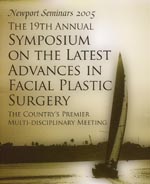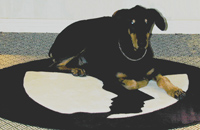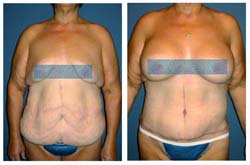Vol. 4, No. 5 – August 2005
Welcome to our August email update.
COMBINING COSMETIC SURGERY PROCEDURES FOLLOWING WEIGHT LOSS
More and more patients are turning to various forms of bariatric surgery to assist in weight loss. But not all patients who come to us seeking surgical improvement after weight loss have accomplished their goals through surgery. We are sometimes amazed to see patients who have lost 50 to 100 pounds only to inform us that it was entirely due to diet and exercise. Regardless of how the weight is lost, surgical body contouring can afford significant improvement, but also presents special cautions and hazards. There is no question that this field is expanding, but it will be several years until more standard approaches are developed.
While some Centers are now offering combined whole body lifts, these procedures are still the exception rather than the rule. For the most part, this surgery must be performed on an inpatient basis and requires long operating times and prolonged recovery. Our personal approach is more conservative since all of our surgery is done on an outpatient basis.
Patients who have lost large amounts of weight do not always have the same goals. While most patients feel that correction of the sagging abdomen and breasts are primary goals, others will express major concern about their face, arms, back, or thighs.
(The example shown here is a patient who underwent a combined abdominoplasty and breast augmentation.) When we first examine patients we try to get a sense of what bothers them the most. Some will focus on their face, stating that they can cover their body. Others take just the opposite approach stating that fitting into clothes is a primary concern.
Our approach to this type of surgery is to focus on the patient’s primary goals and try to develop a strategic plan that will allow us to gain the maximum improvement in the fewest number of procedures without compromising safety. All surgery carries risk, but in some cases, patients who have lost large amounts of weight have added risk due to alteration of protein metabolism. This can increase the risk of wound disruption or delay healing. The patient’s underlying general health can alter our approach. Cardiovascular problems may pose problems related to anesthesia and metabolic problems such as diabetes can effect recovery and resistance to infection. All of this must be taken into consideration when formulating the surgical plan especially since patients can face significant expense when complications occur.
Personal habits can play an important role. Smoking, of course, is the most obvious. We have had an absolute policy for the past several years of refusing to operate on patients who are actively smoking. It simply leads to too many problems. We have found that if the surgery is important enough, patients can stop for the required minimum month of total abstinence. Also important are hygiene and good sensible nutrition. Massive rapid diets are not acceptable since they also rob the patient of nutrition needed at the time of surgery.
Many operations requiring more than four hours are routinely performed, we attempt to limit our operating time to this period whenever possible. If we anticipate surgery will take significantly longer, we generally recommend staging the procedure. Like American Airlines, we always stress that safety is our primary concern!
A final factor to consider is operating position. Some procedures require the patient to be face down, while others, face up. While it is possible to turn the patient during surgery, (we frequently do it while carrying out liposuction) it does add time and complexity to the procedure and may also be an indication for staging.
DR. TOBIN LECTURES AT NEWPORT BEACH SEMINAR
 I was very pleased to again be invited to speak at the 19th Annual Symposium on Advances in Facial Plastic Surgery. This is, indeed, one of the premier multi-disciplinary meetings focusing on cosmetic surgery of the face. Held at the Hyatt Regency Hotel in Newport Beach, California, we were delighted to enjoy not only a great meeting but wonderful weather, good food, and great company.
I was very pleased to again be invited to speak at the 19th Annual Symposium on Advances in Facial Plastic Surgery. This is, indeed, one of the premier multi-disciplinary meetings focusing on cosmetic surgery of the face. Held at the Hyatt Regency Hotel in Newport Beach, California, we were delighted to enjoy not only a great meeting but wonderful weather, good food, and great company.
My lectures at the meeting covered four topics: 1 – non fracture laser assisted rhinoplasty; 2 – the extended subperiosteal facelift; 3 – avoiding the need for drains and dressings following facelift; and 4 – the planned secondary tuck following facelift surgery.
NON FRACTURE LASER RHINOPLASTY
I discussed our non fracture laser technique. By utilizing the carbon dioxide laser for four dissection we are able to work precisely in a near bloodless field. This has greatly increased the precision of our surgery as well as reducing post operative bruising and swelling. We also utilize rasps and files to model bone in preference to the older techniques of fracturing with chisels and osteotomes. The also promotes more rapid healing and minimizes the long term weakening of the nasal bones. By combining these techniques, we have greatly enhanced our overall results. An added benefit is that we no longer need to resort of packing inside the nose for stabilization. This is welcomed by our patients who find they can breathe through their nose right after surgery.
FACELIFTING ENHANCEMENTS
On Saturday, I gave three lectures related to techniques of facelifting that we emphasize at our Center. These lectures included a talk of the extended subperiosteal coronal lift, our recommendation for planned secondary mini-tucks rather than waiting for the need for a second full facelift, and finally, a talk describing some of the techniques we utilize to allow our patient to recover without the need for drains or bulky dressings, with a minimum of swelling and bruising.
I’ll review some of these talks in future editions.
Of course, as always, we welcome your suggestions, questions and comments about the Newsline.
My thank s to all of you who wrote, emailed or otherwise inquired about our Doberman, Amelia’s well being. I am pleased to report that she continues to do very well. She asked me to express her thanks also and to let you know that she is looking forward to seeing many of you when you return to the Center.
s to all of you who wrote, emailed or otherwise inquired about our Doberman, Amelia’s well being. I am pleased to report that she continues to do very well. She asked me to express her thanks also and to let you know that she is looking forward to seeing many of you when you return to the Center.
Sincerely,
Howard A. Tobin, M.D., F. A. C. S.
www.newlook.org
For general information: askdena@newlook.org or n41gt@newlook.org


